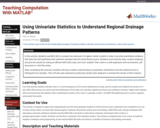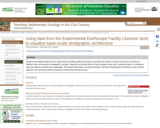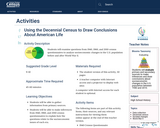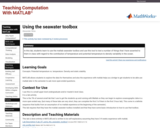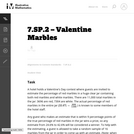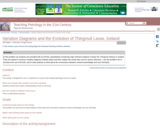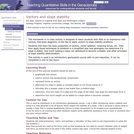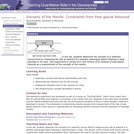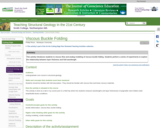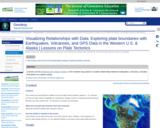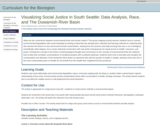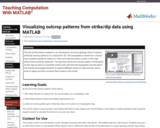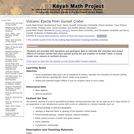Prior to this project, students have measured sections in the field and have had a lot of experience interpreting physical processes of sedimentation from real sedimentary sequences. They have had in-depth exposure to three depositional systems (deep water, shelf, and beach), but not much exposure to others. I typically show them some good quality seismic lines of a continental margin right before this project begins. I take them on a tour of the tank, but this is not required. Instead, students can read the GSA Today article on Jurassic Tank that summarizes how it works, what it's used for, etc.:
Paola,C., Mullin, J., Ellis, C., Mohrig, D., Swenson, J., Parker, G., Hickson, T., Heller, P., Pratson, L., Syvitski, J., Sheets, B., Strong, N., 2001, Experimental Stratigraphy; GSA Today, Geological Society of America, Vol. 11, pp. 4-9.
The students have three weeks to complete the poster that is the final product for this project and, because this is part of a project-based course, I do very little formal lecturing during this project. I act as a facilitator, directing students to readings, Fuzzim basin modeling software, web resources, and, importantly, the resources that help them understand how Jurassic Tank works. In class, students are given a dip section image of stratigraphy produced in Jurassic Tank, their 'outcrop' or 'seismic line'. They then must answer three major questions (each a different component of their poster). First, what real-world depositional environments might the JT deposit effectively emulate? JT deposits can be viewed as an analog for several different, real-world environments (laterally linked and vertically stacked via Walther's Law); on a digital version of their dip section, students label these different environments by outlining their deposits in different colors and they provide images of these environments downloaded from the web or scanned in. Second, what would measured sections look like at three different locations on the cross section and what would a correlation diagram look like? The measured sections should embody the real-world depositional environments that they outlined above (i.e. the facies should be realistic representations of facies encountered in each depositional environment). The stratigraphic sections shouldn't just be coal and sand, but should take into account the actual sedimentary features one might expect to find in the depositional environments that they cross. Third, what parameter was changed to create the stratigraphy in the dip section and how was that parameter changed through time? At this point, students know that one of three rates were changed: rate of base level rise or fall, subsidence rate, or sediment feed rate. They need to choose one and defend their interpretation. The beauty of this exercise is that a defensible interpretation can be made for any of these forcings; this is an important concept to get across in the end.
(Note: this resource was added to OER Commons as part of a batch upload of over 2,200 records. If you notice an issue with the quality of the metadata, please let us know by using the 'report' button and we will flag it for consideration.)
![Using Regression Models to Examine the Effect of Carbon Dioxide on Fluid pH [version 1.0]](https://oercommons.org/static/newdesign/images/materials/default-thumbnail-index.png)

